

[ROE home page] [WFAU] [IfA] [ATC] [UKST home page] [AAO home page] [AAO H-alpha page] [Search]
![]()

 A rich new
vein of Galactic Planetary Nebulae
A rich new
vein of Galactic Planetary Nebulae New Herbig-Haro
Objects in Orion
New Herbig-Haro
Objects in Orion New probable
SuperNovae
New probable
SuperNovaeThese new PNe are invisible or ocassionally barely detectable on previous deep standard UKST R or J-band exposures of the field but are easily found on the new H-alpha exposures.
Follow-up visual searches of 24 new 3 hour H-alpha exposures by Q.Parker and M.Hartley have found about 100 new PNe candidates
None of these are in the existing Acker 1992, 1996 catalogues. So far every candidate followed up with CCD imaging (6 so far) has turned out to be a real object.
If this frequency is replicated throughout the survey then about 1000 new optically detected resolved PNe should be discovered.
This can be compared with the ~1500 currently know in the galaxy (both hemispheres) based on entries in the on-line Acker Strasbourg-ESO catalogue and the 1996 Acker supplement. Simple visual scanning of the survey films is thus expected to significantly increase the numbers of faint, extended Southern Galactic plane PNe. These low surface brightness PNe have proved ellusive to many previous photographic or objective-prism searches.
Here we expect to tap a rich new vein of these evolved objects.
Follow-up spectroscopy is planned to confirm the nature of many of these new PNe candidates as well as the host stars which are expected to be in the white dwarf phase of stellar evolution. Due to their anticipated sheer numbers, the importance of this new source of PNe for studies of stellar evolution, PNe morphology, interaction and dissipation with the ISM and for galactic kinematics cannot be overstated.
Planned SuperCOSMOS scans of these films would undoubtedly pick-up many more unresolved or barely resolved candidates for further study via comparison with the equivalent `continuum' short-red exposures which have similar (slightly shallower) depth.
![]()
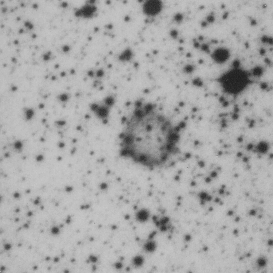
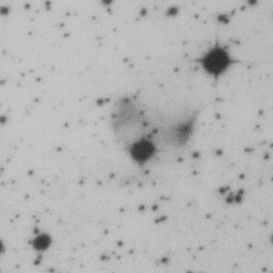
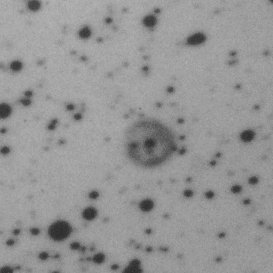
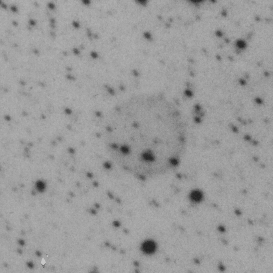
Figure 1a & b. Top left & top right are both from exposure HA17614 (field 334)
Figure 1c & d. bottom left from exposures HA17617 (field 226) &
bottom right from exposure HA17619 (field 392).![]()
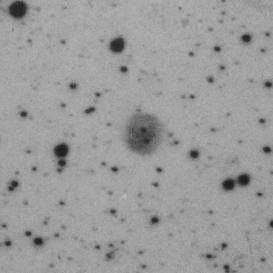
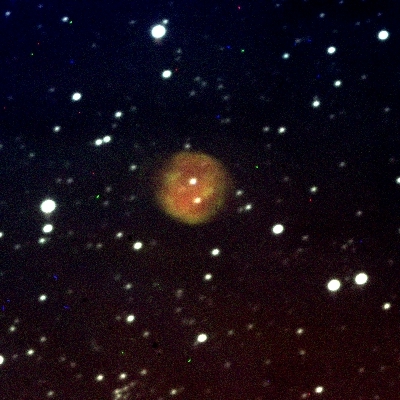
The image is a colour composite formed from 3 seperate 500sec exposures centred on the H-alpha, [NII] and [SII] regions (Red:Green:Blue). The planetary nebulae is confirmed giving confidence in the veracity of our visual search criteria on the original AAO/UKST H-alpha films. The [SII] was quite weak and contributes little to the image. Note that the composite depth of this AAT CCD image is comparable to the UKST H-alpha 3-hour exposure.
![]()
We show in figure below the H-alpha image of V510 Ori (= HBC 177) taken
from the new Orion film. The image clearly shows the start to possess a
highly collimated jet and a bow shock 2arcminutes to the ENE.
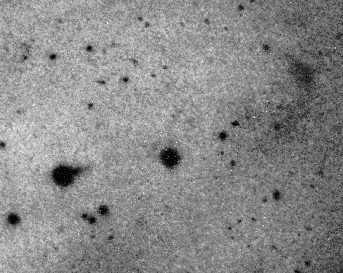
We also present an annotated scanned H-alpha image of a larger region in the Orion complex showing a candidate giant HH flow. The northern HH objects (HH 306B to HH 309A) are shown in relation to L1641-N (marked by a cross) and the optical sources PR Ori and V832 Ori. The 3pc flow HH 34 is seen to the west with its terminal redshifted (HH 33/40) and blueshifted (HH 88) shocks. The central source is indicated as HH34*. North is up and east is left. The image size is 35x50 arcmin. The image is courtesy of S.Mader.
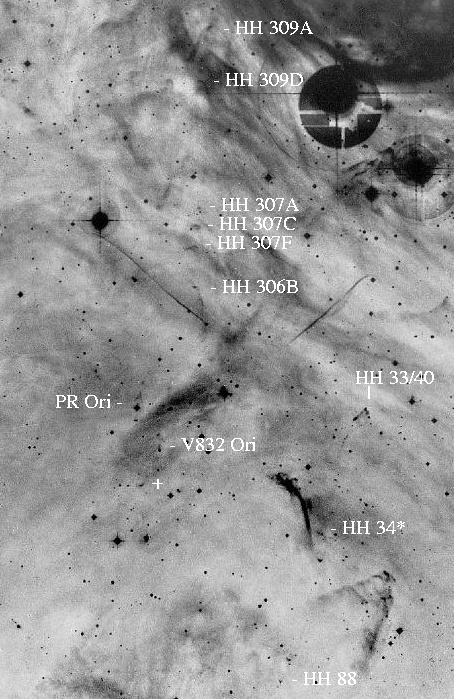
![]()
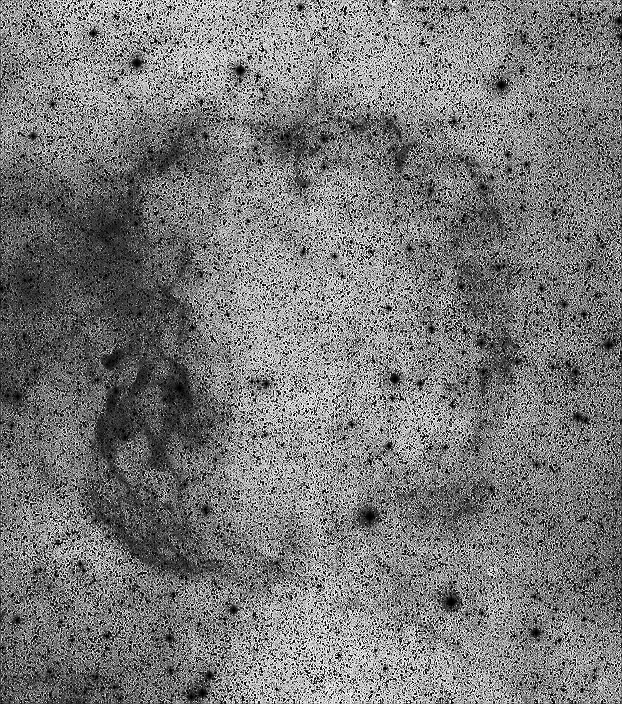
Further updates, discoveries etc will be placed on these pages on a regular basis. It may be decided to keep a running inventory of all new PNe discoveries together with images and co-ordinates.
Please note that the scanned images do not reflect the image quality of the original UKST H-alpha films.
![]()